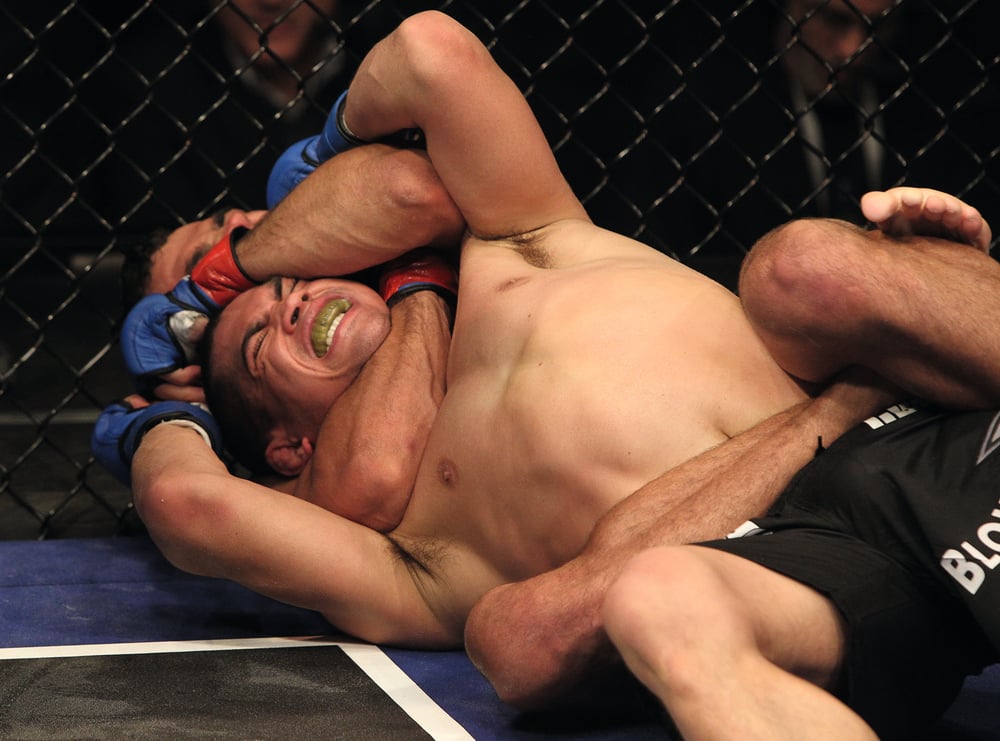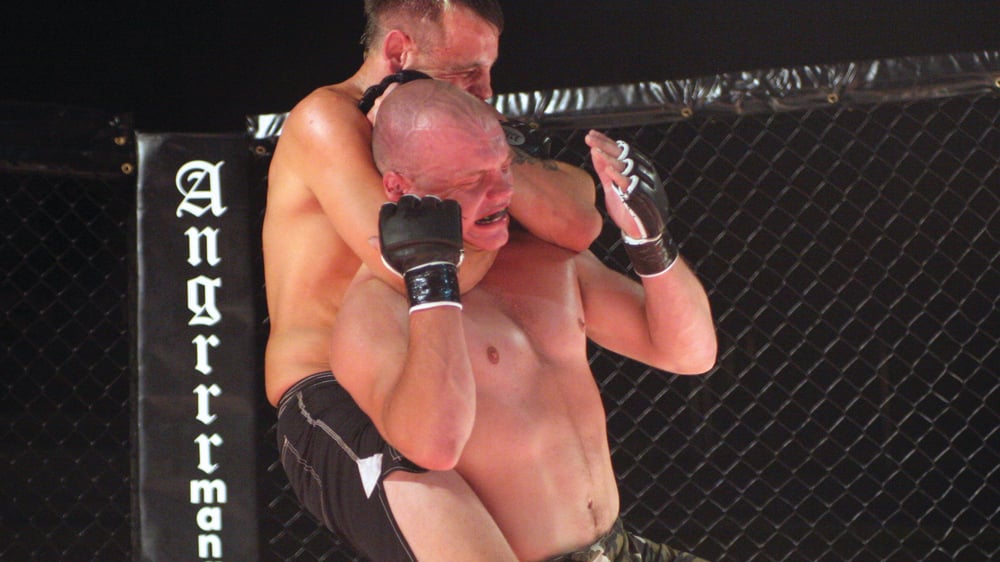
Issue 217
May 2025
Ray Klerck untangles the science behind the stats and myths surrounding the most misunderstood way to lose a fight.
Sure, submissions seldom earn the slow-mo treatment afforded to a fly knee. However, these silent assassins rack up the body count. Quiet. Efficient. Leaving W’s on the floor without the drama. According to a new 30-year analysis published in the Journal of Sports Medicine and Physical Fitness, nearly one in five UFC fights ends via submission, and almost three-quarters are around the neck area. The rear naked choke (RNC) alone accounted for almost 33% of all submission finishes, making it the single most successful fight-ending move in UFC history. And if you’re fighting in lighter weight classes ranging from bantam to welter, your odds of getting wrapped and tapped out go up even further. It’s easy to dismiss submissions as a Royce Gracie-on-VHS relic, especially as striking evolves. However, in many ways, that makes chokes even more dangerous, because fighters are training less for them, respecting them less, and walking straight into them with their chins high and their necks soft.
IT'S NOT AIR - IT'S BLOOD
To the inexperienced fighter or MMA fan, getting choked out is just a matter of losing air. That doesn’t make sense considering the average person can hold their breath for 71 seconds, and research suggests this can be drastically improved when practiced, plus it’s also beneficial to recovery. In theory, a fighter could have a choke applied with 2 minutes to go in the round and still survive. That’s a false economy in real life because most chokes in MMA are a vascular neck restraint (VNR), not air chokes. That means they cut off the blood supply, not the airflow. And the difference is massive. According to a recent narrative review in The Physician and Sportsmedicine, the pathophysiology of these chokes involves reduced cerebral perfusion pressure. In human terms, that means the brain doesn’t get enough oxygen-rich blood because the carotids and jugulars are being squeezed shut. Unconsciousness can occur in as little as 6–10 seconds when both arteries are properly compressed. That’s faster than it takes your corner to yell instructions on how to break free from the choke. Most of the time, a clean VNR is safe, provided the referee steps in quickly and the ‘chokee’ doesn’t try to be a hero. But repeated exposure may lead to cerebral hypoxia, and that’s where the science gets murky. Long-term effects on brain health are still being studied, and fighters are left swaying in a grey zone with their necks on the line. Literally.

THE WEIGHT CLASS THAT TAP MORE
If you fight in the lower to middle range meat grinders, you’re in choke country, especially considering everyone’s got the gas tank to finish the job. According to the UFC submission study, the fighters in the mid-range weight classes – 155 to 185lb - had a statistically higher number of submissions than their flyweight or heavyweight peers. Why? They’re in the Goldilocks zone of MMA that creates a size-versus-skill balance. Lighter fighters tend to rely on speed and volume striking. Heavier fighters are more reliant on power and tend to burn out faster. The middle classes? They inhabit the perfect storm. They’re fast enough to scramble. Strong enough to hold a choke. Conditioned enough to grind out positional control. This may make the fighters in these divisions more likely to end up in grappling-heavy exchanges, where submissions, especially chokes, come into play. When your opponent can chain-wrestle, hold pressure, and still slip in a rear naked choke without gassing out, your defense needs to be airtight. But here’s the problem: most fighters don’t train their necks with the same urgency that they train their hips, hands, or cardio.
YOUR NECK IS NOT AN AFTERTHOUGHT
Everyone appreciates the importance of grip strength, core stability, and hip mobility. But neck training? That’s usually limited to a few shrugs or some outdated harness from a Rocky reboot. Yet your neck power is the last line of defense in a choke. And, according to The Physician and Sportsmedicine research, it might also be the key to reducing long-term damage from repeated VNSs, aka chokes. Strong neck muscles provide more than just resistance. They offer structural support that helps maintain partial blood flow, delay the onset of unconsciousness, and could even reduce the severity of cerebral pressure drops. A thicker neck doesn’t just make you harder to choke, it gives your brain more time before the lights go out. That’s not bravado. That’s biology. The other oversight? Fighters obsess over escapes but rarely train their tap reflex. That may sound soft, but it might just save your brain. The problem may be cultural. We still celebrate fighters who go out on their shield even when that means unconsciousness. But tapping early when a choke is sunk isn’t cowardice. It’s damage control. Repeated exposure to hypoxia, even if it’s brief, could carry compounding neurological risks. The review authors highlight how hypoxic injury might not show symptoms immediately, but over years of training and competition, which accumulates. Tapping isn’t a weakness. It’s futureproofing.

BUILD A CHOKE-PROOF NECK
So, what should fighters be doing? The answer is a three-part strategy: isometric holds, dynamic resistance, and positional drilling under fatigue. Start with basic isometrics: manual resistance neck bridges (lying and standing), static flexion and extension, and lateral holds. These build foundational neck strength and endurance. You can think of them like planks for your spine. Then add dynamic work. This looks like band-resisted rotations, controlled partner resistance drills, and yes, even old-school harness movements if done correctly. But the real secret sauce? Drilling choke escapes under cardio fatigue. Your ability to fight away pawing hands, tuck your chin, and rotate your body changes when your heart rate’s pounding and your forearms are shot. And if you’re a coach reading this, stop outsourcing neck training to luck and genetics. Add it to your weekly training program. It’s just like everything else that keeps you standing upright. The numbers don’t lie. Nearly 20% of UFC fights still end in submission, and over 70% of those aim for your neck. Most fighters are so focused on striking defense and ground escapes, they forget that the part that chokes out the lights is an anatomical weak point hiding in plain sight. Add in the physiological risks of repeated vascular neck restraints, and the ‘just go out’ mindset looks less like grit and more like gambling. But the upside is that the data is in. The tools to fix the problem are already in your gym. Train your neck. Respect the choke. And don’t mistake unconsciousness for toughness. The best defense isn’t denial – it will always be preparation.
...









